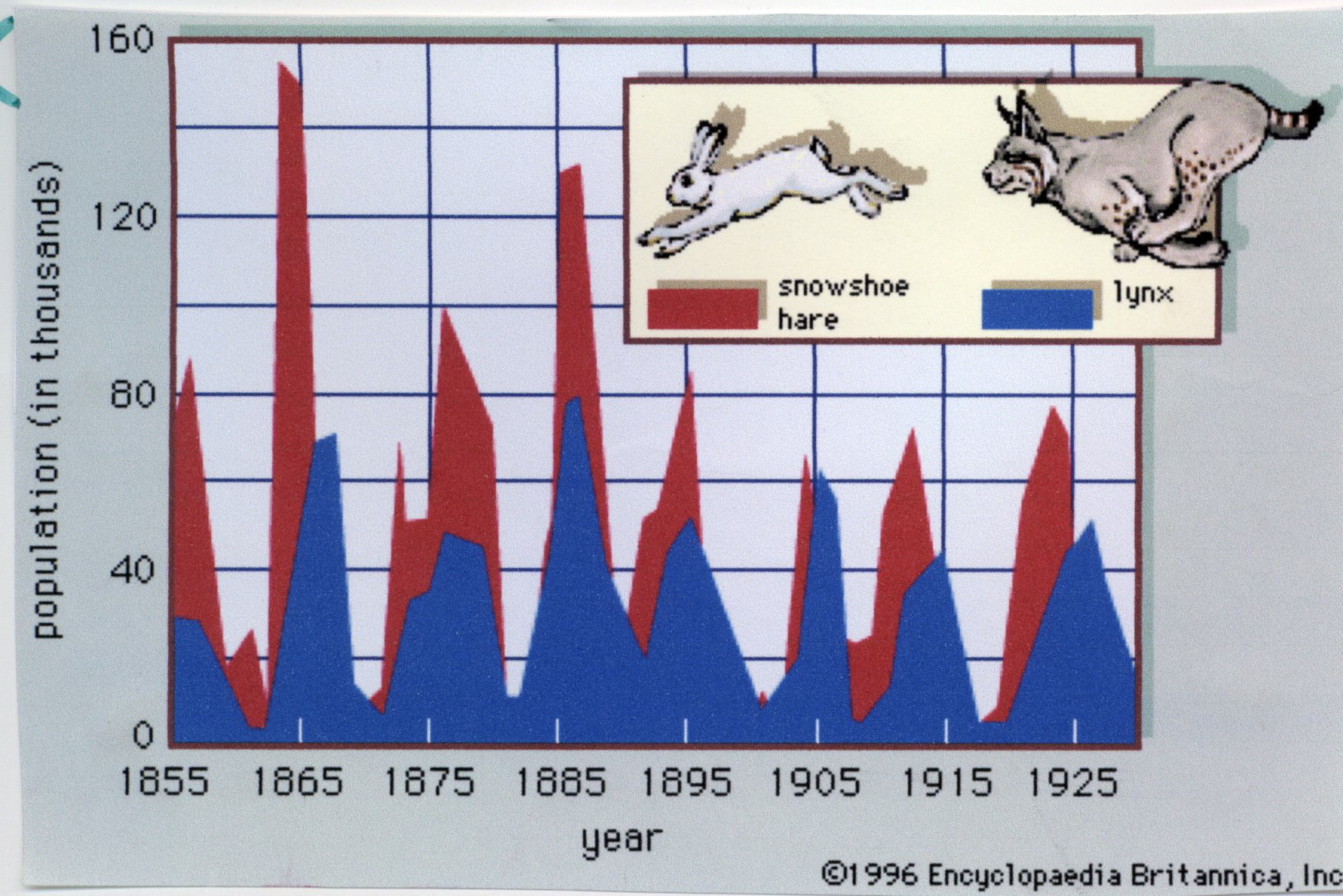We did a beans experiment attempting to convey natural selection. We placed different colored beans in a dark black soil. We acted as the birds(the predators) and the color that went extinct first was white. The weakest bean color was excluded from the bean group, thus having a very little chance to reproduce. Therefore, the weak genes are unable to go onto the next generation and the population got stronger. The other beans, which colors were red & brown, their numbers quickly dwindled into tinier amounts. They weren't as weak as the white beans, however, they were still weaker than the black beans which easily camouflaged into the scenery. This experiment clearly depicts natural selection, selecting the fittest which were the black beans. From a logic point of view, the result of this natural selection is there were most likely only be black beans left in the population in later years. |  This diagram protrays the competition between fox and rabbit. It's a prey predator cycle. This cycle is balanced. There is just enough rabbits for the foxes to prey on and there has to be more rabbits than foxes since foxes consume rabbits. This a a perfect balance where everyone is happy. |
 This diagram depicts natural selection perfectly. The fittest will survive and the weakest dies out. A mutation makes a variation however unfavorable mutations are eliminated. Unfavorable mutations are traits which make the organism weaker and more prone to death or illness. Hence, reproduction and mutation happens and thus favorable mutations are more likely to survive. This enables the reproduction. Thus, the process of natural selection. |
Overproduction
Overproduction occurs when species reproduce more offspring than possibly survive. However the world has limited resources and is not enough to sustain overproduction. Such resources are food, water, shelter to support these organisms. Hence, this induces a struggle for survival for the offspring. Those who endure the tough circumstances better survive thus, able to pass their traits to their offspring. This is hence, natural selection. This pepper seed picture below clearly illustrates overproduction. The pepper has too many seeds, thus overproduces and it can take over the world if there is no natural selection.

Adaptations are clearly protrayed in this diagram of Darwin's finches. He insinuated the finches had evolved and developed adaptations towards their food. You can see in this diagram, the bird that preys on buds and fruit has very huge beaks and they look extremely strong. Well obviously, from that evidence you can infer that those beaks are extremely useful for breaking hard shells on acorns. Moreover, the beak is able to hold larger protions like fruit. An apple is bigger than a tiny worm. Darwin inferred these are adaptions, the need to survive forcing them to change over generations to adapt to their food and environment.


There were no vertebrate animals on land, many million years ago. The only vertebrate species existing in the world were fish, which lived underwater. The competition for food was hugely intense. Some species of fish living near the coast developed a hugely strange mutation. This was the ability to push themselves along in the mud and sand on the shore with their fins. Thus, access to food sources that no other fish could reach. This amazing advantage enabled greater reproductive success, hence the mutation was passed along. This is natural selection. In this picture above, it shows a rare mutation of a fish with hands. Like the example given above, it illustrates the same process.
